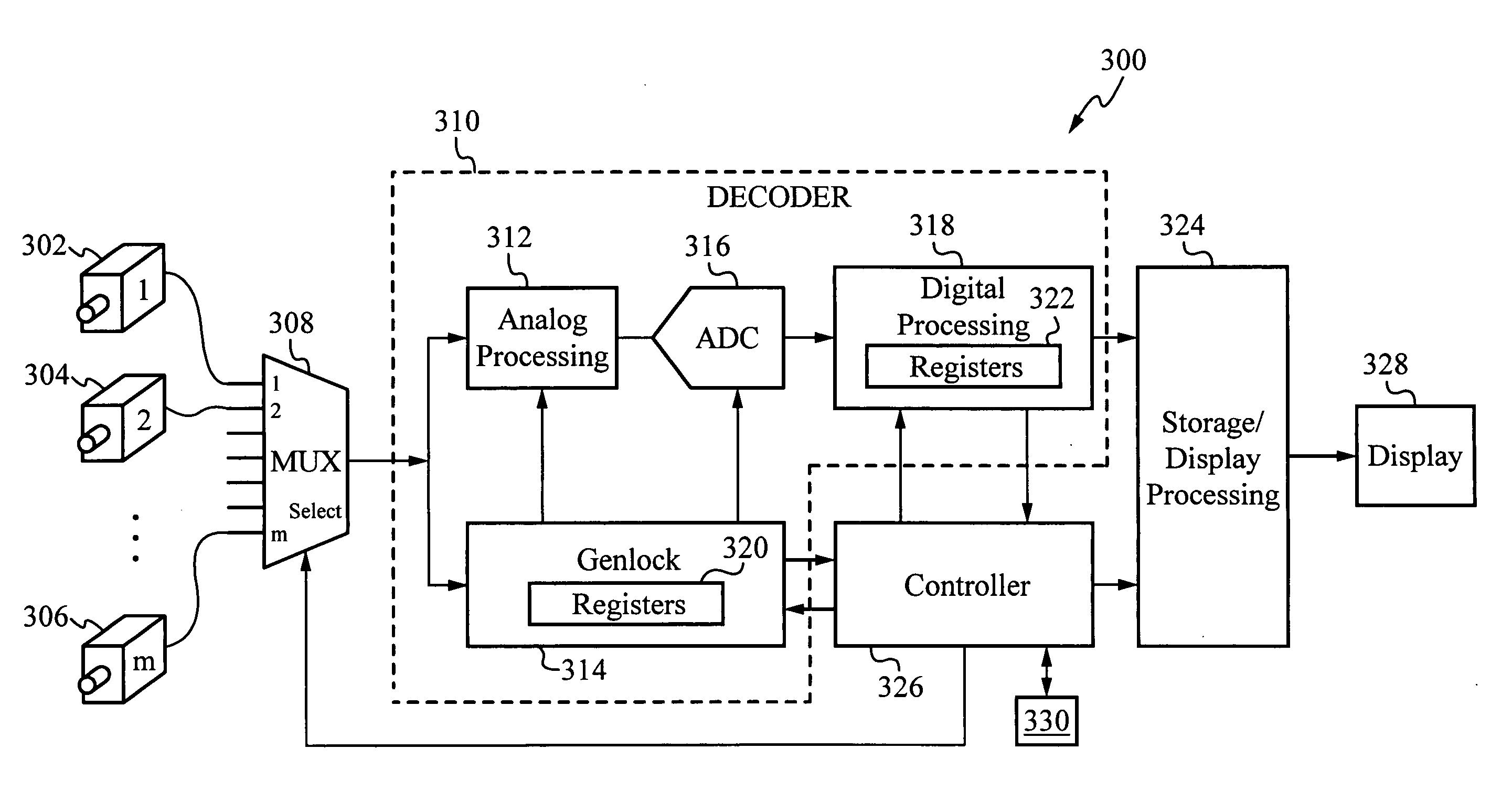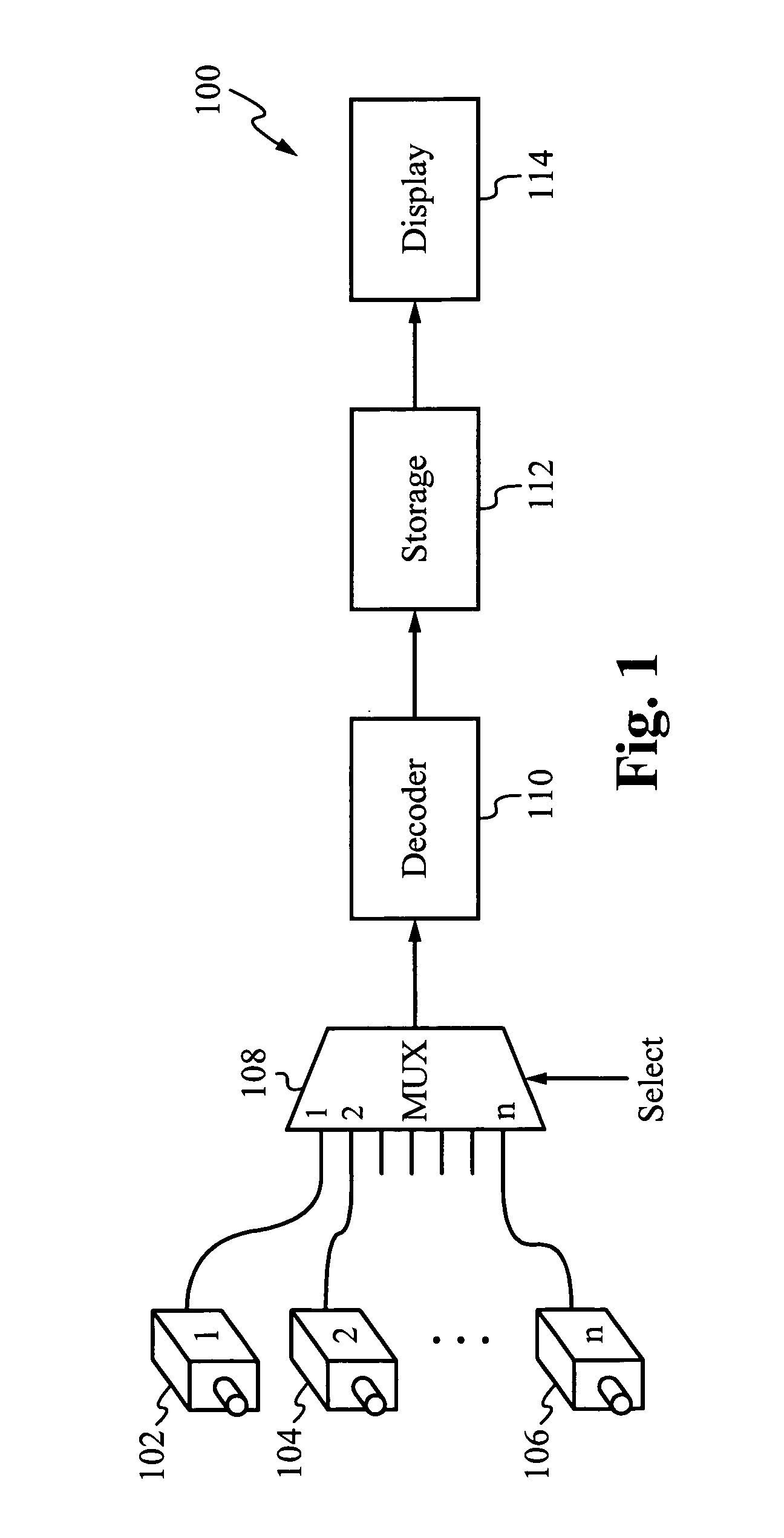Method and apparatus for receiving video signals from a plurality of video cameras
a video camera and video signal technology, applied in the field of video signal reception from a plurality of video cameras, can solve the problems of time-consuming process of conditioning the video decoder, unacceptably long time required for the system b>100/b> to perform a complete cycle of all the cameras, and achieve the effect of less time, less time, and duplicate storage locations for storing parameters
- Summary
- Abstract
- Description
- Claims
- Application Information
AI Technical Summary
Benefits of technology
Problems solved by technology
Method used
Image
Examples
Embodiment Construction
[0021]FIG. 3 illustrates a schematic block diagram of a video surveillance system 300 in accordance with a preferred embodiment of the present invention. A plurality of (m) video cameras 302, 304 and 306 are positioned at various locations and are each coupled to provide a video signal to a respective input of a multiplexer 308. A select input of the multiplexer 308 conditions the multiplexer 308 to route a selected one of the video signals from the cameras 302–306 to an output of the multiplexer 308. The cameras 302–306 need not be synchronized to each other. Accordingly, video signals formed by the cameras 302–306 can vary from each other in frequency, phase, amplitude and dc offset.
[0022]An output of the multiplexer 308 is coupled to a video decoder 310. The video decoder 310 includes an analog processing block 312, a genlock block 314, an analog-to-digital converter (ADC) 316, and a digital processing block 318. The selected video signal from the output of multiplexer 308 is pro...
PUM
 Login to View More
Login to View More Abstract
Description
Claims
Application Information
 Login to View More
Login to View More - R&D
- Intellectual Property
- Life Sciences
- Materials
- Tech Scout
- Unparalleled Data Quality
- Higher Quality Content
- 60% Fewer Hallucinations
Browse by: Latest US Patents, China's latest patents, Technical Efficacy Thesaurus, Application Domain, Technology Topic, Popular Technical Reports.
© 2025 PatSnap. All rights reserved.Legal|Privacy policy|Modern Slavery Act Transparency Statement|Sitemap|About US| Contact US: help@patsnap.com



